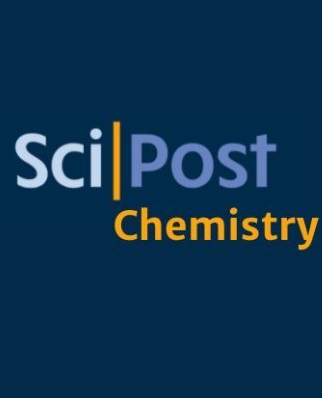通过量子稀算术实现指数变量拓扑递归中的 x-y 对偶性
IF 5.4
2区 物理与天体物理
Q1 PHYSICS, MULTIDISCIPLINARY
引用次数: 0
摘要
对于给定的谱曲线,拓扑递推理论产生了两个不同的多微分系 $\omega_{g,n}$ 和 $\omega_{g,n}^\vee$,它们对于代数谱曲线来说是通过通用的 $x-y$ 对偶公式相关联的。我们提出了一种形式主义,将拓扑递归的 $x-y$ 对偶公式的有效性从代数曲线扩展到具有指数变量的谱曲线,其形式为 $e^x=F(e^y)$ 或 $e^x=F(y)e^{a y}$,其中 $F$ 为有理数,$a$ 为某个复数。13, 763 (2019);J. Lond.Math.Soc. 109, e12946 (2024)]。从拓扑递归的角度来看,$\omega_{g,n}^\vee$族对于这些曲线来说是微不足道的。然而,我们建议通过法迪夫量子稀释算术的一个版本来改变 $\omega_{g,n}^\vee$ 的 $n=1$ 扇形,这将导致正确的 $\omega_{g,n}$ 和 $\omega_{g,n}^\vee$ 两个族,它们之间的关系与代数曲线的 $x-y$ 对偶公式相同。因此,$x-y$交映变换公式进一步扩展到了受拓扑递归支配的重要例子,例如,包括 $\mathbb{C}^3$ 的格罗莫夫-维滕不变式(或等价于三重霍奇积分)、轨道胡尔维茨数和 $\mathbb{P}^1$ 的静态格罗莫夫-维滕不变式。所提出的形式主义与拓扑顶点曲线的特定框架选择所遇到的拓扑递归问题有关。本文章由计算机程序翻译,如有差异,请以英文原文为准。
x-y duality in topological recursion for exponential variables via quantum dilogarithm
For a given spectral curve, the theory of topological recursion generates two different families $\omega_{g,n}$ and $\omega_{g,n}^\vee$ of multi-differentials, which are for algebraic spectral curves related via the universal $x-y$ duality formula. We propose a formalism to extend the validity of the $x-y$ duality formula of topological recursion from algebraic curves to spectral curves with exponential variables of the form $e^x=F(e^y)$ or $e^x=F(y)e^{a y}$ with $F$ rational and $a$ some complex number, which was in principle already observed in [Commun. Number Theory Phys. 13, 763 (2019); J. Lond. Math. Soc. 109, e12946 (2024)]. From topological recursion perspective the family $\omega_{g,n}^\vee$ would be trivial for these curves. However, we propose changing the $n=1$ sector of $\omega_{g,n}^\vee$ via a version of the Faddeev's quantum dilogarithm which will lead to the correct two families $\omega_{g,n}$ and $\omega_{g,n}^\vee$ related by the same $x-y$ duality formula as for algebraic curves. As a consequence, the $x-y$ symplectic transformation formula extends further to important examples governed by topological recursion including, for instance, Gromov-Witten invariants of $\mathbb{C}^3$ (or, equivalently, triple Hodge integrals), orbifold Hurwitz numbers, and stationary Gromov-Witten invariants of $\mathbb{P}^1$. The proposed formalism is related to the issue topological recursion encounters for specific choices of framings for the topological vertex curve.
求助全文
通过发布文献求助,成功后即可免费获取论文全文。
去求助
来源期刊

SciPost Physics
Physics and Astronomy-Physics and Astronomy (all)
CiteScore
8.20
自引率
12.70%
发文量
315
审稿时长
10 weeks
期刊介绍:
SciPost Physics publishes breakthrough research articles in the whole field of Physics, covering Experimental, Theoretical and Computational approaches. Specialties covered by this Journal: - Atomic, Molecular and Optical Physics - Experiment - Atomic, Molecular and Optical Physics - Theory - Biophysics - Condensed Matter Physics - Experiment - Condensed Matter Physics - Theory - Condensed Matter Physics - Computational - Fluid Dynamics - Gravitation, Cosmology and Astroparticle Physics - High-Energy Physics - Experiment - High-Energy Physics - Theory - High-Energy Physics - Phenomenology - Mathematical Physics - Nuclear Physics - Experiment - Nuclear Physics - Theory - Quantum Physics - Statistical and Soft Matter Physics.
 求助内容:
求助内容: 应助结果提醒方式:
应助结果提醒方式:


